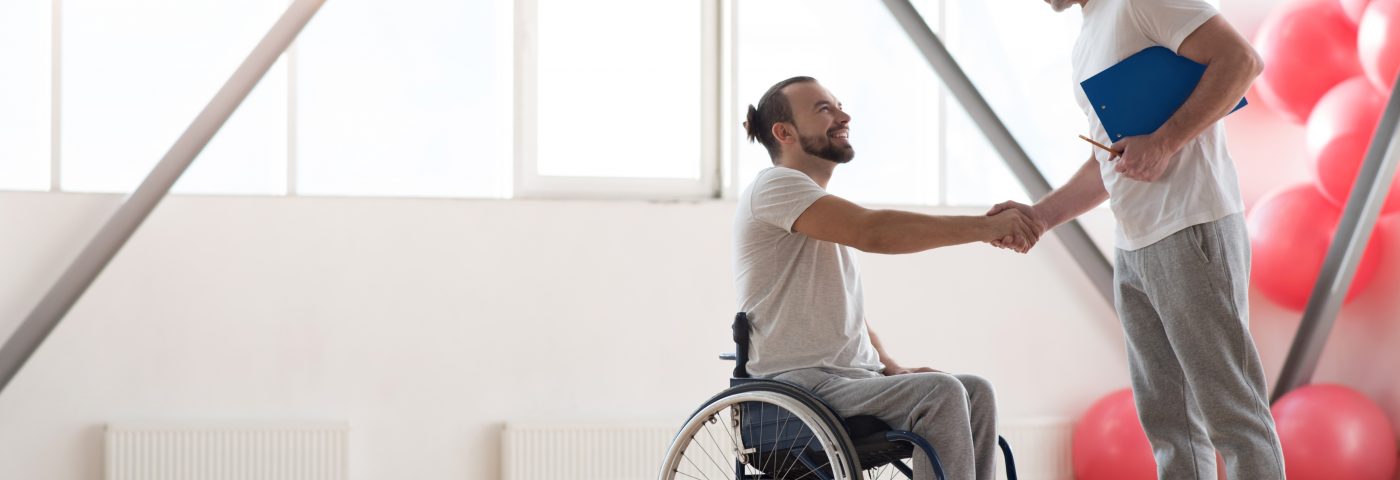If you or your child have adrenoleukodystrophy (ALD), you may benefit from paramedical treatments — services such as massage, and occupational and speech therapy, that have been shown to help improve patients’ quality of life.
The following is a look at some of the ways such treatments may help in managing this rare disorder.
What is paramedical treatment?
Paramedical treatments are services provided by professionals who are not in the public health system. These professionals aren’t physicians, dentists, or nurses. Instead, their work focuses on patients’ quality of life.
The treatments offered span a broad range, and include physiotherapy, occupational therapy, speech therapy, massage therapy, and even acupuncture.
About ALD
ALD is a rare genetic disorder characterized by the degeneration of nerve cells that carry information to and from the brain. The disease also can affect the body’s hormone-producing adrenal glands, causing them to make lower levels of certain steroid hormones.
When ALD affects the brain, as it most often does in its childhood form, physicians refer to it as childhood cerebral adrenoleukodystrophy, or CALD; this is the most severe type of ALD. CALD symptoms can include hyperactivity, learning difficulties, and behavioral changes such as aggression. Patients also may experience vision problems, difficulty swallowing, and poor coordination.
How might paramedical treatments help?
There are multiple paramedical treatment approaches, designed to aid in areas such as speech, muscle impairment, and self-care, that may help you or your child with ALD.
Physiotherapy
Physiotherapy — treating disease through physical methods such as exercise and manipulation — generally helps people restore, maintain, and maximize their strength, function, movement, and overall wellbeing.
The practice is recommended for most people with adrenomyeloneuropathy (AMN), the adult-onset form of ALD, because it can help build muscle strength to manage spasticity (muscle stiffness) and improve walking ability. It also can serve as a supportive treatment to improve core stability and relieve pain.
Because Addison’s disease, one of the three types of ALD, can also cause muscle pain and spasms, physiotherapy also may be of benefit.
A safe exercise program can help ensure that patients maintain mobility for as long as possible, without causing damage that might exacerbate their condition.
In addition to working to increase muscle strength and improve overall body alignment, the physiotherapist can recommend assistive aids such as canes or joint braces.
Occupational therapy
Occupational therapists can work with patients to find easier ways to perform daily tasks, such as getting dressed, and may help patients maintain mobility and overall independence. These therapists also can assess the patient’s home or school and suggest possible changes, such as building a chairlift or ramp.
CALD patients may have problems walking or balancing, and some may have learning disabilities. Occupational therapists can help these children learn fundamental tasks and keep muscle strength and control for as long as possible.
Occupational therapists also can assess a child’s school schedule to ensure it is not too tiring. He or she may suggest ways to make the school day easier for the child.
For adult patients, occupational therapists can help streamline many tasks. They also can provide patients with adaptive devices to make daily tasks easier.
Speech therapy
Some children with ALD may have difficulty speaking and understanding language. Problems in understanding the spoken word may be due partly to hearing loss.
For all patients with such issues, speech therapy may help. The treatment uses exercises to promote coordination and to fortify and enhance the range of motion in the mouth, jaw, and throat muscles. Speech therapists also help patients with muscle coordination for chewing and swallowing.
Massage
Massage, particularly of the hands and feet, can help improve circulation, stimulate the nerves, and even temporarily relieve pain. Patients can try self-massage, or can ask a family member or caregiver for help. It is key to not apply excess pressure while massaging.
Some AMN patients have found useful a specialized therapy system that combines cycloidal massage and infrared heat to help ease the effects of muscle spasticity. These patients may use a specially designed massage bed that combines these types of therapy.
Acupuncture
There has been at least one report of an ALD patient in Korea who was treated with acupuncture, which may have had an effect on the management of his disease. However, more research is necessary to support the use of such therapy in ALD.
Last updated: Feb. 3, 2021
***
Adrenoleukodystrophy News is strictly a news and information website about the disease. It does not provide medical advice, diagnosis or treatment. This content is not intended to be a substitute for professional medical advice, diagnosis, or treatment. Always seek the advice of your physician or other qualified health providers with any questions you may have regarding a medical condition. Never disregard professional medical advice or delay in seeking it because of something you have read on this website.


